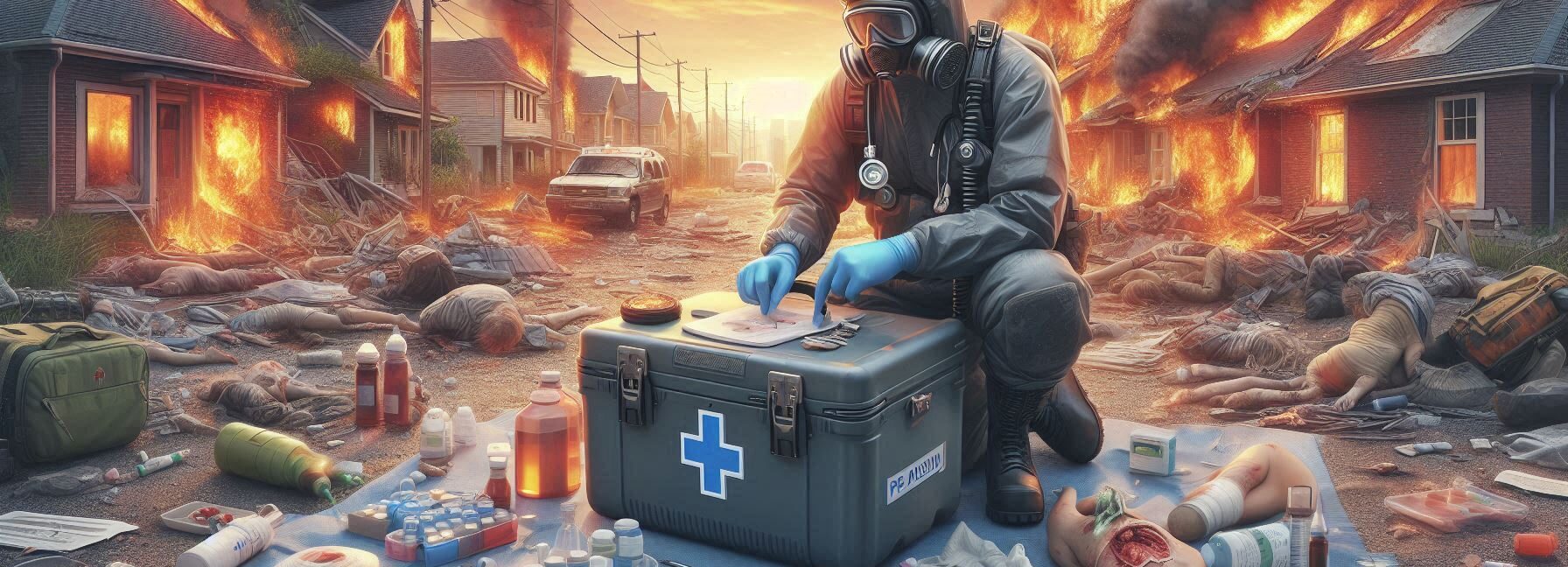Please Note: This post may contain affiliate links. If you click one of them, we may receive a commission at no extra cost to you. As an Amazon Associate, I earn from qualifying purchases.
Last Updated on November 1, 2025 by Kevin Collier

Top Takeaways and Key Concepts
- Cool the Burn Immediately: Use cool (not cold) water for at least 20 minutes.
- Remove Tight Clothing or Jewelry: Only if not stuck to the burn area.
- Cover with a Non-Stick Dressing: Use clean, non-fluffy material or cling film.
- Avoid Applying Ointments or Creams: Do not use butter, oils, or greasy substances.
- Seek Medical Attention Promptly: For large, deep, or facial burns, or if unsure.
Picture yourself outside, breathing in the fresh air. You feel like a total survival expert since the sun is shining. You have a fire going, and the marshmallows are roasting just right. But hold on! You grab for that hot pot, and oh no! It hurts you. Or maybe you drop some hot water. Ouch!
That sting is no pleasure at all. It seems that the outdoors isn't your only enemy anymore. You also have to worry about blisters and burns. But don't worry. You can do this without calling 911 on your dead phone, I guarantee!
First, look for some chilly water. It's nice if there's a stream nearby. If you don't have any, get some clean water. Don't freeze it; just cool it down. You want to calm down, not shock. Keep the burn under the water for at least ten minutes. It helps a lot.
What do you do if you can't locate water? Don't worry. If you have a towel or a clean piece of fabric, get it wet. Anything cool can help you calm down.
You might not have a nice first-aid kit with you right now. But if you brought stuff like aloe vera or honey, these can help a lot. A quick dab of either on the burn? It can significantly help with the pain. A lot of people keep their camping gear relatively simple, so if you're feeling daring, go ahead. A little gauze or a clean handkerchief can help keep a burn safe and cover it up. Simply wrap it around the area carefully.
Don't forget to take painkillers. Now is the time to take any over-the-counter drugs you have, such ibuprofen. Look over your gear and take some. Believe me, you'll be glad you did.
Also, keep an eye on that burn. If it gets redder or looks worse, you should take it seriously. Wash it with water and keep it covered.
Don't worry too much, though. Things happen, especially when you attempt to be tough and spend time outside. Just remember that being ready makes it simpler to deal with the bumps in the road.
You can do this. Enjoy the fire, toast those marshmallows, and be the best at surviving. Just be careful with those hot pots!
*** Shop for Survival Gear - Tools - Kits ***
Survival Gear - Bags and Backpacks - Knives - Boots/Footwear - Communication
Outdoor Cooking - Gloves - Hydration - Dry Boxes - Water Filtration Systems
Tents - Sleeping Bags - First Aid Kits - Multi-Tools - Flashlights - Fire Starters
Navigation - Survival Food - Night Vision - Headlamps - Stun Guns - Binoculars
Understanding Burns: The Basics
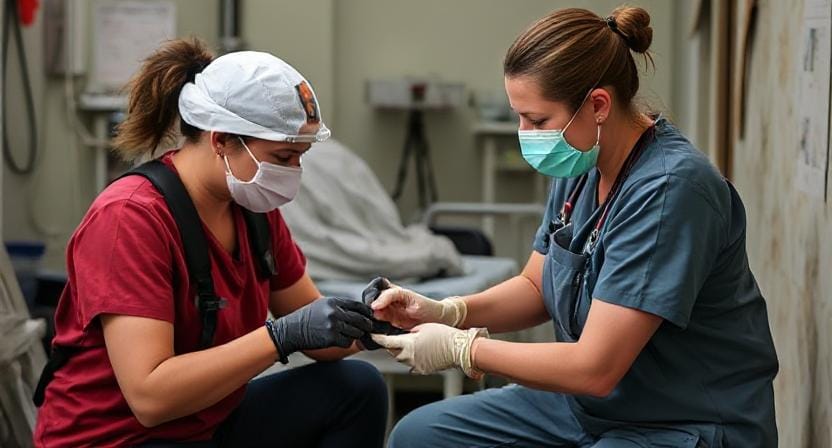
First, let's explain about what burns are. Burns happen when skin touches anything hot, like a blazing marshmallow that got out of control or a friend who keeps trying to “help” when cooking over the fire.
First-degree burns are like a mild sunburn. Second-degree burns are worse and have blisters. Third-degree burns make the skin appear like it belongs in a horror movie.
It's interesting that understanding what kind of burn it is can help you figure out how to cure it. A first-degree burn may be painful, but it normally heals fast.
Burns of the second degree? Well, they need a little extra care. And what about third-degree burns? Let's see… Those people need medical help right now, faster than you can say, “I should have been more careful.”
What to Do Right Away for Burn Treatment
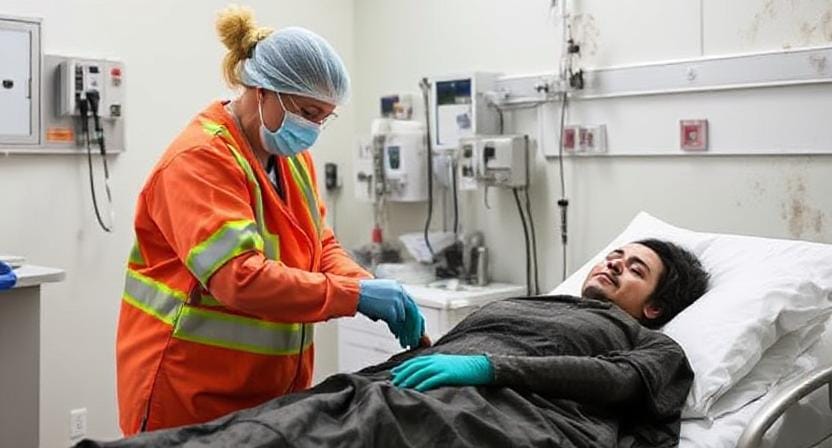
What should you do right after you get burned? If you're trying to scare away bears nearby, then panic is NOT a choice here!
1. Cool the burn
It's important to cool down the burn, by the way! If you can, run cool (not cold) water over the region for 10 to 20 minutes. You can use any clean cloth that has been soaked in cool water instead if there isn't any running water around. Don't put your hand in ice-cold water, though, because that will make matters worse.
2. Don't put ice directly on your skin
Putting ice directly on a burn is like inviting disaster to your party: it feels wonderful at first, but it will hurt later! Instead, make things calm and cool. Think about a spa day instead of a polar plunge.
3. Take off any tight clothes or jewelry
Take off any tight clothes or jewelry near the burn site carefully before swelling begins. Nothing says “fun” like cutting off circulation while camping!
Putting Stuff on Your Burn
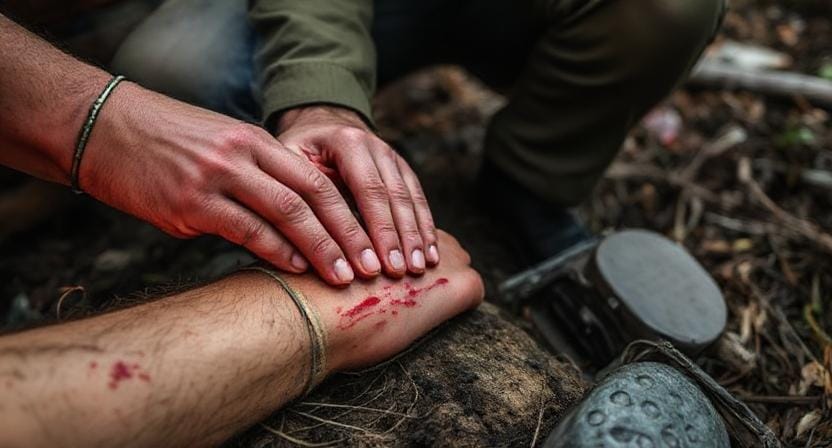
It's time to dress that wound like it's going to prom now that things have calmed down.
1. Use clean things
Make sure that everything you use to cover your burn is clean. A handkerchief from last week's trek doesn't count as “clean.” You need sterile gauze or any other clean material because dirt doesn't mix well with open wounds unless you're trying out for a reality show called “Survivor: Infection Edition.”
2. Use Aloe Vera
Now is the time to break out the aloe vera if you have some growing nearby or in your survival kit. Aloe vera gel can help ease pain and speed up healing. It's like duct tape for your skin, but much better.
3. Keep It Hidden
After you are dressed, keep an eye on it! Change the dressing every day or if it gets wet or dirty. Also, don't show off your injury like it's a badge of pride during campfires, because trust me, no one wants s'mores cooked by someone with leaking wounds!
Keeping an Eye Out For Problems
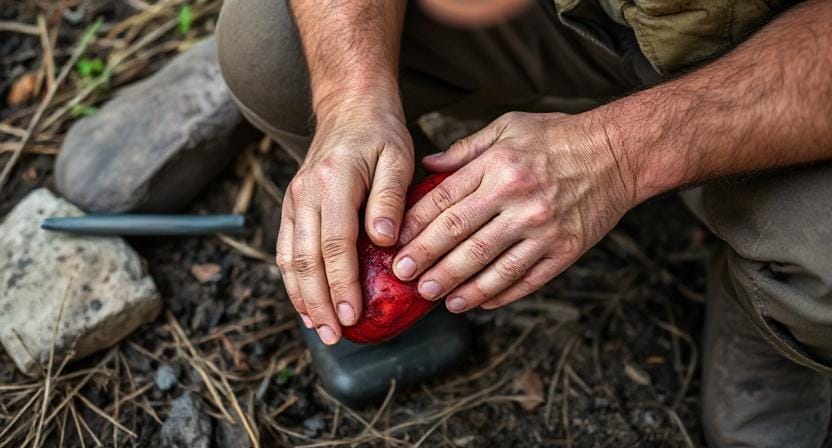
I wish I could assure you that everything will be OK after treating a burn, but sometimes things go wrong, just like when your friend tries to make pancakes without reading the instructions.
1. Look for signs of infection
Watch for redness that spreads beyond the burn site, more pain, swelling, or any pus-like particles that show up. These are all indicators of infection that can be hard to spot. If these symptoms come on faster than weeds in the spring, get medical treatment right once, even if it involves trudging for miles through the woods.
2. Understand When It's Bad
To be fair, second- and third-degree burns may need to be looked at by a doctor even if they seem treatable at first. Don't wait if things look bad! Keep in mind that understanding when to get involved with nature is part of surviving it.
Natural Ways to Ease Pain
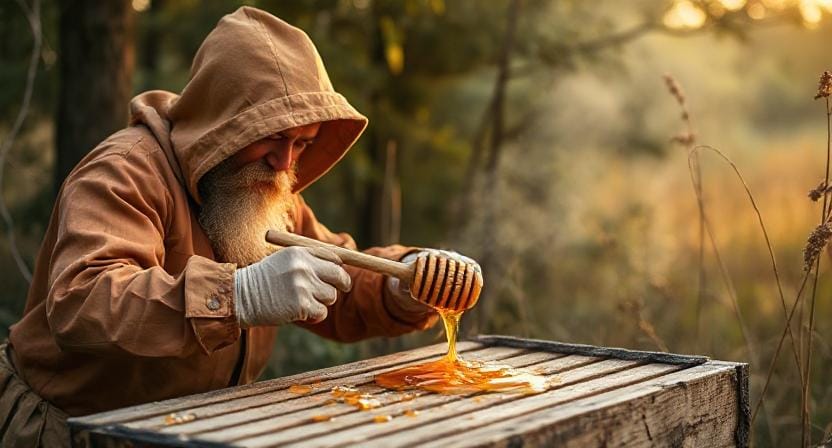
To be honest? Sometimes even nature needs help dealing with the pain of burns, but happily there are natural ways to do it all around us:
1. Herbal Remedies
Calendula and chamomile are two herbs that might perform miracles. They are recognized for their anti-inflammatory characteristics, which may help with pain after a burn and smell great too! Just make tea with them and soak cloths in it before gently rubbing them on the affected regions.
2. Honey Magic
Honey is interesting since it has antibacterial properties and helps wounds heal because its thick texture keeps moisture in and keeps bacteria out of our precious wound space, as long as you're not allergic.
Conclusion: Stay Prepared!
So, here’s the deal, my friend. Whether you’re deep in the woods chasing butterflies or just going on a nighttime bathroom run trying not to trip over roots, prepping ahead really makes a difference.
I mean, unexpected stuff can happen. Maybe you hit a tree branch or get a little too close to the campfire. Ouch, right? It helps to be ready for burns or those pesky little accidents.
Pack some basic supplies. Those little band-aids? They’re lifesavers. A roll of gauze is handy too. If you have any herbal remedies, even better! Something like aloe vera cream can soothe burns. Trust me, you’ll want that stuff in your backpack.
Knowledge is power! Learn simple ways to treat burns, even when you’re away from civilization. Just remember, cool water can be your best friend. If you know what to do, you’ll feel more at ease when things don’t go as planned.
Not every bump or bruise needs a superhero move. Sometimes, just a little care can save a lot of hassle. You’re not going to need to rush to the hospital every time something goes wrong. Being prepared means you can enjoy your trip.
So go out there. Have fun, explore, and yes, enjoy those s’mores. Just remember, a little prep goes a long way in keeping your outdoor adventures safe and filled with great memories! Happy camping!
Frequently Asked Questions
How long should I cool a burn for?
Cool the burn with clean cool water for at least 20 minutes to help reduce pain and tissue damage.
Should I remove clothing from a burned area?
Remove tight clothing or jewelry only if it is not stuck, as swelling can occur quickly around burns.
What should I cover the burn with?
Use clean non-stick dressing, sterile gauze, or cling film to protect the burn from dirt and further injury.
Can I use ointments or oils on a fresh burn?
No, avoid butter, oils, and greasy creams because they trap heat and can worsen the burn area.
When should pain medicine be taken?
Over-the-counter pain relievers like ibuprofen can be taken if available to help reduce pain and inflammation.
How do I know if the burn is infected?
Increasing redness, swelling, pain, or pus-like discharge may indicate infection and require medical attention.
When is medical help needed for off-grid burns?
Seek help for deep burns, large burns, facial burns, or if you are unsure of the severity.
Suggested Resources:
Burn First Aid
https://www.redcross.org/get-help/how-to-prepare-for-emergencies/types-of-emergencies/burns.html
Natural Remedies for Burns
https://www.healthline.com/health/home-remedies-for-burns
Aloe Vera Benefits
https://www.webmd.com/vitamins/ai/ingredientmono-100/aloe-vera

Kevin Collier is a seasoned survivalist and expert in prepping and homesteading, contributing to WiseSurvive.com. With a deep-rooted passion for self-sufficiency and outdoor survival skills, Kevin shares practical advice, strategies, and resources to help individuals prepare for any challenge. His informative articles cover a range of topics, from essential survival techniques to sustainable living practices, empowering readers to thrive in any situation. Whether you're a novice or a seasoned prepper, Kevin's insights will inspire you to take charge of your readiness and build resilience for the future.




